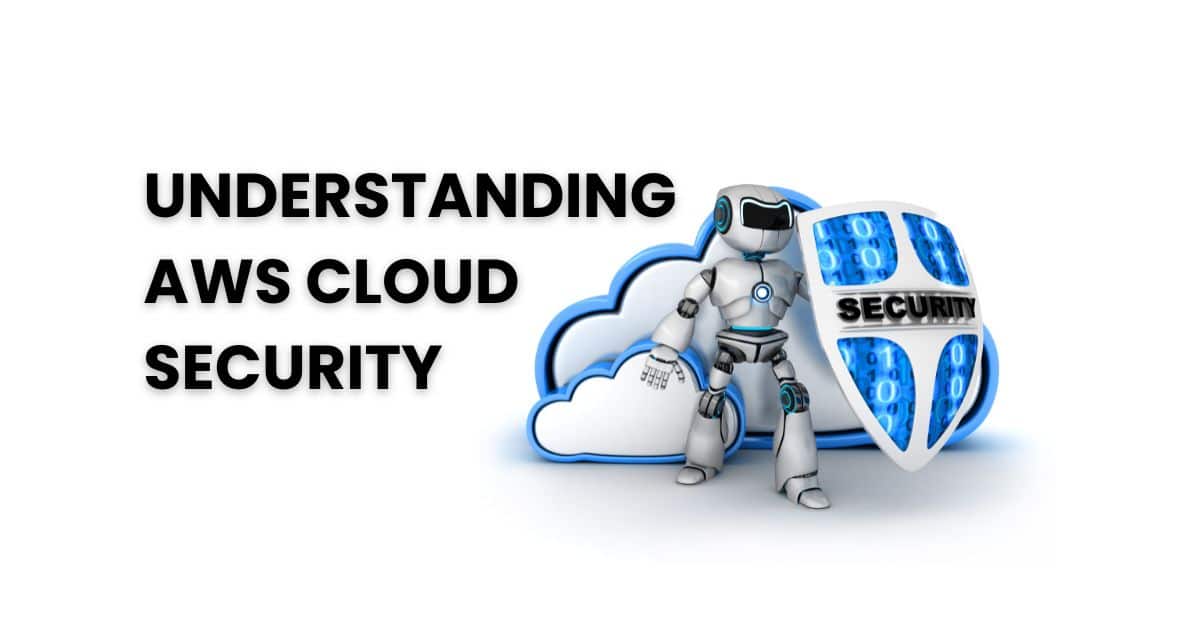When Amazon Web Services (AWS) initially launched in 2006, it offered the first compute, storage, and database cloud service that developers could build on. Over time, AWS became a fundamental cloud service provider as organizations started migrating to the cloud.
As one of the three primary cloud services providers, AWS remains integral to most businesses. With organizations deploying more cloud-native applications and running more workloads in the cloud, managing AWS security has become increasingly important to your business. While AWS manages the infrastructure’s security, you still need to manage security within your AWS environment.
To protect sensitive data and applications, you need a comprehensive AWS cloud security strategy.
What is AWS Cloud Security?
AWS cloud security is a framework designed to mitigate risk and protect the cloud-based infrastructure. Under the Shared Responsibility Model, AWS manages the security of the cloud infrastructure while customers secure the activities within the cloud. AWS provides a suite of tools and services that help organizations implement and monitor key security requirements, like:
- Identity and access management (IAM): authorizing and authenticating users and services
- Vulnerability management: detecting and remediating security weaknesses
- Encryption: transforming information so that only authorized parties can understand it
- Continuous monitoring: setting alerts to detect abnormal activity indicating a potential security incident
The suite of tools supports compliance requirements and identifies suspicious behavior within cloud environments so that security teams can understand and rapidly respond to any potential security issues.
How Does AWS Security Work?
AWS provides customizable security tools to help you implement and adapt your security measures. While AWS maintains the infrastructure layer’s security, you need to manage all other aspects.
Securing the AWS Infrastructure
Although AWS maintains the security of its cloud infrastructure, you will still be responsible for configuring security measures on top of that secure cloud infrastructure. AWS infrastructure security includes:
- Data protection: encryption for data-at-rest and access restriction policies
- Continuous monitoring: threat identification and event logging
- Compliance: on-demand access to compliance reports
Securing Applications on AWS
Since you’re responsible for securing what happens in your AWS infrastructure, you need to implement security controls, like:
- Threat detection: identify threats and reduce false positives
- Web application security: block common attacks and tackle application security needs with a web application firewall
- Automation: adapt to operational contexts with automated security incident response tools
- Proactive monitoring: event logging to identify potential security issues
Securing Data on AWS
AWS offers you capabilities that help protect sensitive data, including:
- Encryption: AES-256 for data-at-rest in services like Elastic Block Store (EBS), Simple Storage Service (S3), Relational Database Service (RDS), and Redshift
- Key management: key management and data discovery tools
- Data Protection: S3 inventory and bucket monitoring
- Compliance: automated compliance checks
- Data redundancy: data duplication and monitoring
What Security Tools Does AWS Offer?
AWS offers products and services to help you manage your security responsibility. Some key tools include:
- AWS IAM: manages permissions to control what AWS resources users can access
- Amazon GuardDuty: analyzes logs from CloudTrail, VPC Flow Logs, and DNS to identify threats like privilege escalation and compromised credentials
- AWS Config: records configuration changes across AWS resources with notification and the ability to enable automatic remediation
- AWS Inspector: assesses network vulnerabilities and generates security finding to prioritize vulnerability remediation efforts
- AWS CloudTrail: records AWS API calls for auditing and compliance tracking with comprehensive user activity and API usage monitoring
- AWS CloudWatch: centralized logging and monitoring for AWS environments to detect abnormal behavior and unauthorized activity
- AWS Shield: guards against network and transport layer Distributed Denial of Service (DDoS) threats
Why Do Organizations Struggle with AWS Cloud Security?
While many companies use AWS services, they use more than just AWS services. Managing security across a multi-cloud or hybrid environment that includes on-premises resources makes security complex. Some common challenges include:
- Identifying assets: Cloud environments change quickly and keeping up-to-date becomes overwhelming, especially with short-term assets like virtual machines
- Maintaining secure configurations: Configuration drift can occur when adding new applications or responding to access requests, creating security gaps.
- Securing APIs: Attackers can use misconfigurations or vulnerabilities to gain unauthorized access to applications and data.
- Enforcing access controls: Changes to user access controls at the network and application layer can lead to excess privileges and unauthorized access.
- Visibility across environment: Using only AWS provided security tools can limit visibility into risks from other cloud providers or the on-premises deployments.
Best Practices for Implementing AWS Cloud Security with a Threat Detection and Incident Response Solution
Your AWS cloud security needs to be integrated into your overarching security monitoring function. If you’re busy trying to monitor different cloud environments, like AWS and Azure, in the vendor-supplied tools, you can miss key alerts because you have no way to correlate the data. Meanwhile, if you have an on-premises deployment, like a data center, that connects to your AWS cloud, you need to correlate that data, too.
Some best practices for implementing holistic AWS cloud security include:
- Enforce the principle of least privilege: Users and services should have only the access they need to function, and privileges should be consistently enforced across the entire IT environment.
- Limit AWS security groups: AWS security groups manage incoming and outgoing traffic for Elastic Compute Cloud (EC2) instances and should be limited to permit only necessary traffic.
- Encrypt data-at-rest and in-transit: AWS’s built in encryption manages data-at-rest, but you should ensure that you enable it for all services. You also need to encrypt your networks to protect data-in-transit.
- Limit communications between resources: You should consider having inbound and outbound firewalls that manage communications across internal networks as well as from external sources.
- Centralize all log data: Combining all cloud and on-premises log data enables you to gain visibility into all activities occurring across multi-cloud and hybrid environments.
- Correlate on-premises and cloud logs: Comprehensive log monitoring across both AWS and on-premises environments enables you to correlate data for insights into potential threats and improve alert fidelity.
- Monitor API security: A web application firewall (WAF) combined with an API security solution that captures unfiltered API request and response details helps you detect attacks or API failures.
- Map controls to compliance requirements: Aligning security activities with the compliance requirements that your business needs to meet will help you provide assurance over your cloud security posture for senior leadership and customers.
Graylog: Threat Detection and Incident Response For AWS or Multi-Cloud Monitoring
With Graylog’s AWS Kinesis/CloudWatch input you can centralize all your AWS VPC Flow Logs and any other provider flow logs for a single source of network traffic truth across your cloud, multi-cloud, or hybrid infrastructure.
Graylog ingests all log data, no matter what service generates it, then applies a standardized data model so that you can correlate and analyze all events. Since your IT operations and security teams share the same information, they can communicate more effectively.
Further, with Graylog’s lightning-fast search capabilities, your security and IT teams can get the answers they need, even when they’re searching terabytes of data. Purpose-built for modern log analytics, Graylog gives you the two-for-one solution necessary to improve performance and reduce cybersecurity risk. Our cloud-native capabilities and out-of-the-box security content give your teams the ability to collaborate effectively, reducing service downtime and alert fatigue.
To learn how Graylog can help you save money and respond more effectively to issues, contact us today.


